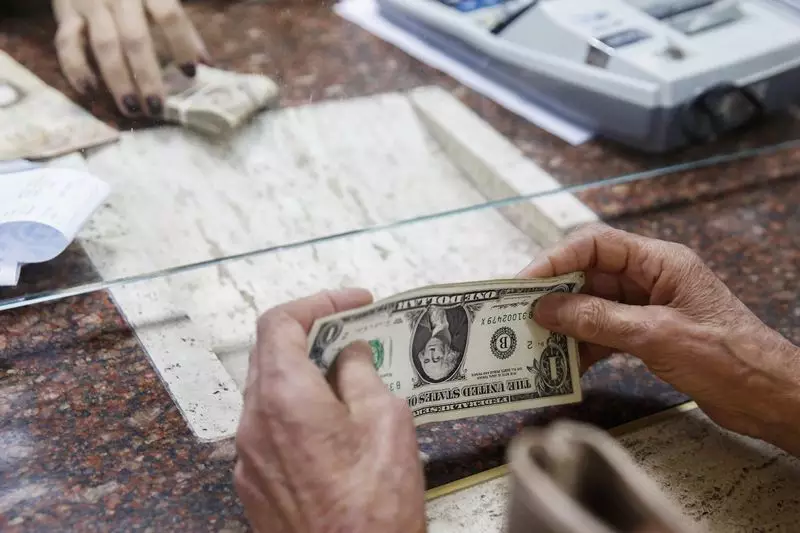The global currency market is poised for significant shifts, as recent data and geopolitical developments suggest critical implications for the U.S. dollar and other major currencies. As we enter a week characterized by key economic indicators and influential speeches from central bank officials, the dollar’s performance is under the spotlight. Meanwhile, international forces and domestic challenges are exerting pressure on the euro, and the yen has shown signs of volatility despite internal optimism around interest rates.
The Dollar’s Gradual Ascendancy
On a recent Monday, the U.S. dollar demonstrated a modest upward trend, reflecting growing investor confidence in the midst of waning expectations for aggressive interest rate cuts. This sentiment was bolstered by statements from U.S. President-elect Donald Trump, who urged members of the BRICS nations to refrain from developing alternative currencies capable of displacing the dollar. His assertive rhetoric, promising substantial tariffs for any nation failing to comply, underlines the dollar’s entrenched position as the world’s primary reserve currency.
Market analysts, like Jonas Goltermann from Capital Economics, remain optimistic about the dollar’s trajectory. While acknowledging a recent setback, they assert that the dollar’s resilience is supported by a stable U.S. economy, particularly in contrast to deteriorating economic conditions in other global regions. This dynamic is crucial, as traders evaluate the potential for interest rate adjustments by the Federal Reserve, with expectations for a modest easing in the near future.
The upcoming payroll report, set to be released on Friday, will be pivotal for determining the future of U.S. monetary policy. Forecasts suggest a modest increase of 195,000 jobs, following a particularly challenging previous month characterized by external shocks like severe weather and industrial strikes. Yet, analysts caution that the inconsistency in job response data could lead to revisions in these forecasts.
Furthermore, the anticipated slight rise in the unemployment rate, projected to reach 4.2%, will likely keep the Federal Reserve’s agenda on track for a potential interest rate reduction. Current market sentiment postulates a 65% likelihood of a 25-basis-point cut on December 18, with broader considerations for two additional cuts throughout 2025. This foresight significantly influences investor behavior, as the dollar’s trajectory hinges on employment figures and inflation rates.
The Yen’s Resilience Amid Rate Speculations
Recovering from previous losses, the yen has shown a temporary resurgence against the dollar. The yen traded at approximately 150.37, indicating a 0.4% increase amidst an overall downturn the previous week. This recovery raises questions regarding Japan’s economic outlook, particularly in light of recent comments from the Bank of Japan’s Governor, Kazuo Ueda, hinting at imminent interest rate hikes based on encouraging economic data, particularly rising inflation in Tokyo.
Analysts are keenly observing Japanese business investment trends, which have grown at a remarkable 8.1% for Q3. This compelling data has led to speculation about the possibility of a quarter-point hike to 0.5% during the Bank of Japan’s upcoming policy meeting in December. Market participants are particularly focused on labor earnings data, predicted to reveal a robust wage growth environment conducive to further rate adjustments.
In stark contrast to the dollar’s buoyancy, the euro has recently faced significant challenges. Political instability in France weigh heavily on the eurozone’s collective economic outlook. The single currency slipped 0.4% to $1.0532, influenced by apprehension around the French government’s ability to navigate internal tensions. Investors are acutely aware of the risk posed by the far-right National Rally party, which threatens a no-confidence vote against Prime Minister Michel Barnier. Such political unrest adds to concerns regarding fiscal stability, exacerbating fears of budget deficits that could mirror those of economically distressed nations such as Greece.
As market dynamics evolve, the prospect of the European Central Bank cutting rates further adds a layer of uncertainty. Current expectations hint at a 27% chance of a 50-basis-point reduction in the upcoming monetary policy meeting.
As we stand at the precipice of significant economic data releases and political maneuverings, investors must carefully navigate the complex interplay of currency valuations. The U.S. dollar appears to be maintaining its strength, fueled by robust domestic fundamentals in contrast to the euro and yen, which face an array of internal and external pressures. The forthcoming week promises to be critical for shaping the trajectory of these currencies as traders sift through employment figures and central bank signals, all while remaining vigilant of political developments that could reshape the landscape altogether.


Leave a Reply